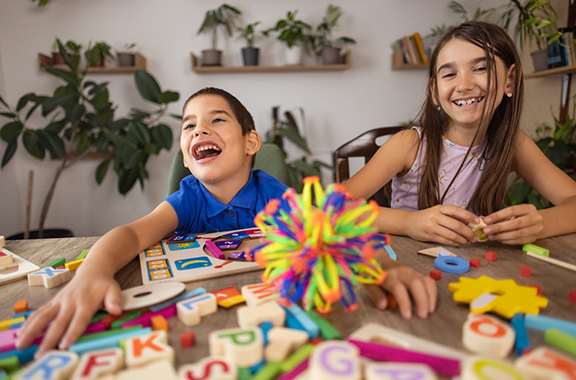How Birth Order Shapes Your Child's Personality and Development
The impact of a person's birth order is a significant factor in identity formation that parents often underestimate. The home environment profoundly impacts child development, with birth order influencing how parents and siblings treat each child. Our birth order shapes how families perceive us and directly relates to the amount of responsibility, independence and support we receive during childhood.
Understanding Birth Order Psychology: The Research Evidence
Birth order can fundamentally change the way parents raise their children. In most cases, parents develop parenting skills over time. The first-born child may be raised in an environment of anxiety if parents are unsure of their new role, potentially resulting in more anxious first-born children. As parents become increasingly comfortable with raising children, they typically give their second or third born child more freedom to explore.

Recent Australian studies indicate that birth order effects can account for up to 20% of personality differences between siblings, with these influences often continuing into adulthood, though their impact may diminish over time.
"Ideally, children should be raised as individuals. Parents should do their best not to discriminate between children. Making comparisons between siblings is dangerous as this can promote competition," says Dr Kimberley O'Brien, Principal Child Psychologist at the Quirky Kid Clinic with over 15 years of clinical experience working with Australian families.
However, the effects of birth order on a child's personality may diminish over time. "As we mature we are less affected by the behaviour of our parents and our initial family unit," says Kimberley. While parenting effects diminish as children progress into adulthood, maternal bonds may differ according to birth order. One study of 426 mothers' relationships with their adult children revealed a deeper emotional connection with their youngest child, yet they would be more likely to contact their oldest-born child when facing personal crises (Suitor & Pillemer, 2007).
Birth Order Characteristics: What the Science Reveals
First-Born Children: Traits and Development Patterns
In general, first-born children typically display several distinct characteristics:
- More independent and trailblazing
- Tendency to be anxious or dominant
- Higher achievers academically
- More conscientious and patient
- Greater sense of responsibility
- More likely to take leadership positions
The research suggests first-borns may have a slight intellectual advantage, with one recent study revealing approximately 3 IQ points difference (about a fifth of a standard deviation) between first-borns and second-borns (Black et al., 2011). This discrepancy is not biologically determined, but more a result of birth endowments, allocated resources and the independent personality traits commonly associated with eldest children.
Middle Children: Beyond the Stereotypes
The 'middle child syndrome' is popularly characterised by children who might be lacking in identity, trying to please others with no defined goals, or vying for attention from their older and younger siblings. However, there is little truth to this notion in Kimberley's professional experience.

"Middle children can be influenced by their elder siblings, and have increased social opportunities with younger and elder peers," notes Kimberley. One study of 794 adult middle-borns revealed no reduction in relationship quality with their family members. They did not preference friendships over family relationships any more than other birth orders (Pollet & Nettle, 2009).
Middle children often develop:
- Strong negotiation skills
- Greater flexibility and adaptability
- More open to new experiences
- Demonstrate more rebellious tendencies (Healey & Ellis, 2007)
- Excellent social skills and diplomatic abilities
Youngest Children: Personality and Behaviour Traits
Children born last in line typically gain more attention within the family, however they may display more immature and dependent characteristics than their elder siblings. On a positive note, they have been shown to be more agreeable and warm (Saroglou & Flasse, 2003).
Interestingly, one study of 700 brothers found the younger brothers were 1.48 times more likely to participate in high-risk activities (Sulloway & Zweigenhaft, 2010). Another study revealed an interesting distinction: boys with older siblings were more likely to engage in sports like football, whilst girls with older siblings were less likely to participate in extracurricular activities such as community service and school bands (Rees et al., 2008).
Common traits in youngest children include:
- More agreeable and warm personalities
- Higher propensity for risk-taking behaviour
- Greater creativity and innovation
- More socially outgoing
- Sometimes more dependent on others
Only Children: Development Without Siblings
Only children can be easily dismissed as spoilt or lacking social skills, however their access to more resources and more parental attention certainly benefit their development. Research shows only children often develop:
- Advanced language skills from constant adult interaction
- Higher academic achievement
- Greater self-confidence
- More mature interpersonal skills with adults
- Strong sense of identity and independence
- Comfort with solitude and self-entertainment
These birth order effects are slightly more pronounced for girls (Kristensen & Bjerkedal, 2010). The same effects were found in a study of 2,500 adolescents in a child and adolescent psychiatry clinic (Kirkcaldy, Furnham & Siefen, 2009).
Parenting Different Birth Order Positions: Expert Guidance
There have been theories that birth order can influence your choice of potential romantic partners. "Couples may be able to more easily relate to each other if they have the same birth order, such as two first-borns may be comfortable with independence and increased responsibility. They may also have experience caring for younger siblings," says Kimberley.

Practical Tips for Parents
While there are documented effects of birth order on factors such as personality, risk-taking and academic performance, parents would do well to ensure each child receives equal attention, nurture and resources. Consider these strategies:
- Avoid comparing siblings to one another
- Recognise each child's unique strengths and challenges
- Create special one-on-one time with each child
- Be mindful of not typecast children based on birth order
- Encourage siblings to support rather than compete with each other
- Adjust parenting approaches based on individual needs rather than birth position
When to Seek Professional Support
If you notice concerning patterns in sibling relationships or feel that birth order dynamics are creating significant challenges in your family, consulting with a child psychologist can provide tailored strategies and support.
Common Questions About Birth Order
Can birth order effects be overcome? Yes, awareness of potential birth order influences allows parents to make conscious choices about how they interact with each child, potentially reducing negative effects.
Do birth order effects apply in blended families? Birth order dynamics become more complex in blended families, with children potentially occupying multiple positions (e.g., oldest in one household, middle in another).
Is there an ideal spacing between siblings to minimise birth order effects? Research suggests that gaps of at least three years may reduce direct competition between siblings and allow each child to develop more independently.
Does birth order affect career choices? Some research indicates correlations between birth order and career paths, with firstborns often gravitating toward leadership positions and younger siblings showing greater creative tendencies.
Article by Leonardo Rocker
Published by Quirky Kid
- enquiries@schooltv.me
- •
- +61 3 8538 1644
- •
- Ts & Cs
- •
- Privacy Policy
- •
- Get Alerts
- •
- © 2026 SchoolTV ANZ Pty Ltd

